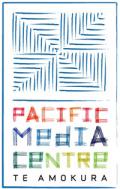
Waitangi Day 1971 saw a new era of Māori protest erupt as a newly-formed activist group, Nga Tamatoa, tried to disrupt national day activities of self-congratulation over New Zealand’s supposedly idyllic race relations.
It ushered in an era of Māori assertiveness over land and language rights that continues until today.
Now a social documentary photographer and political campaigner has brought to life a “forgotten” land rights legal stand-off that gripped the media almost four decades ago.
The current dispute over land in Far North Taipa, by a hapu of Ngati Kahu is yet another in a long series of periodic land disputes that have occupied the media since the Māori Land March of 1975 and Ngati Whatua’s epic defence in 1977 of its last remnant of turangawaewae at Takaparawhau/ Bastion Point.
Further land occupations at Raglan, Whanganui (Paakaitore 1995), Takahue (1995), Huntly (1995) and elsewhere have received their share of media coverage, yet one dispute has almost faded from the nation’s collective memory.
The Ngatihine Block legal dispute is a case study of the means by which Māori land owners became alienated from their turangawaewae through the tangled and complex workings of processes established through the original Native Land Court and its later manifestation, the Maori Land Court.
Case study
“It was difficult to gain insightful and informed media attention for this kind of dispute because of its lack of visual drama and arcane legal processes, which obscured the more fundamental questions of land dispossession and democratic representation,” says political documentary photographer John Miller.
“As a case study, it is representative of a number of other similar cases such as Te Hapua 42 (Far North) and Kiwinui (Eastern Bay of Plenty).
Miller’s research will be reported on in a multimedia presentation at the Media, Investigative Journalism and Technology 2010 conference at AUT University next month.
Many months before the Bastion Point and Raglan land struggles became a household name, a group of Māori land owners in the mid-north of Northland found themselves embroiled in a David and Goliath confrontation with the combined forces of government bureaucracy and corporations wanting to acquire land for industrial forestry development – land owned by Māori.
John Miller (Ngaitewake-ki-Uta hapu of Ngapuhi) found himself pitched into the middle of this dispute when he decided to support his uncle, Graham Alexander.
Alexander had been appointed by the Māori Land Court in 1974 to a trust charged with administering this 5500 hectare area of under-used Māori land in the tribal heartland of Ngatihine (south of Kawakawa).
His opposition to the plans of other trustees to lease the block for 99 years to the forestry company Carter Holt Holdings brought the process to a halt as unanimity of trust votes were a prerequisite for such contracts.
Removed twice
Alexander disagreed with the trust treating with one company without attempts to consult a genuinely representative group of Ngatihine Block shareholders. He was removed twice from the trust by the Māori Land Court for refusing to sign the lease.
This legal stand-off extended for more than three years from 1976, during which time an increasing number of shareholders and outside supporters became involved.
Miller suspended his own photographic activities to become the Ngatihine Block Objection Committee’s publicity officer.
He devoted much time seeking legal and media support to gain broader sympathy and assistance for the struggle, both among the more than 1500 scattered shareholders and the general public at large.
Miller has been currently working with Dr Geraldene Peters under the auspices of AUT University’s Pacific Media Centre, drawing from his extensive collection of documentation to examine how the eventual triumph of the seemingly powerless over the powerful was reflected in media coverage of the time.
In his conference presentation, Miller will use this material to outline how he came to understand the historical and contemporary factors behind the issue and explain these complexities to interested, but uninformed media at a time when Māori journalism and media structures were in their infancy.
“The material will be supplemented by photographs taken at various times through the period,” says Dr Peters, whose collaboration with Miller has included developing use of a new software programme that enables 3D reproduction of research content.
“Parallel with the presentation, an interactive timeline of events will show on three computer screens in the university’s atrium.”
Media, Investigative Journalism and Technology 2010 conference
December 4/5, 2010, @ AUT University Conference Centre
Ngatihine research project



